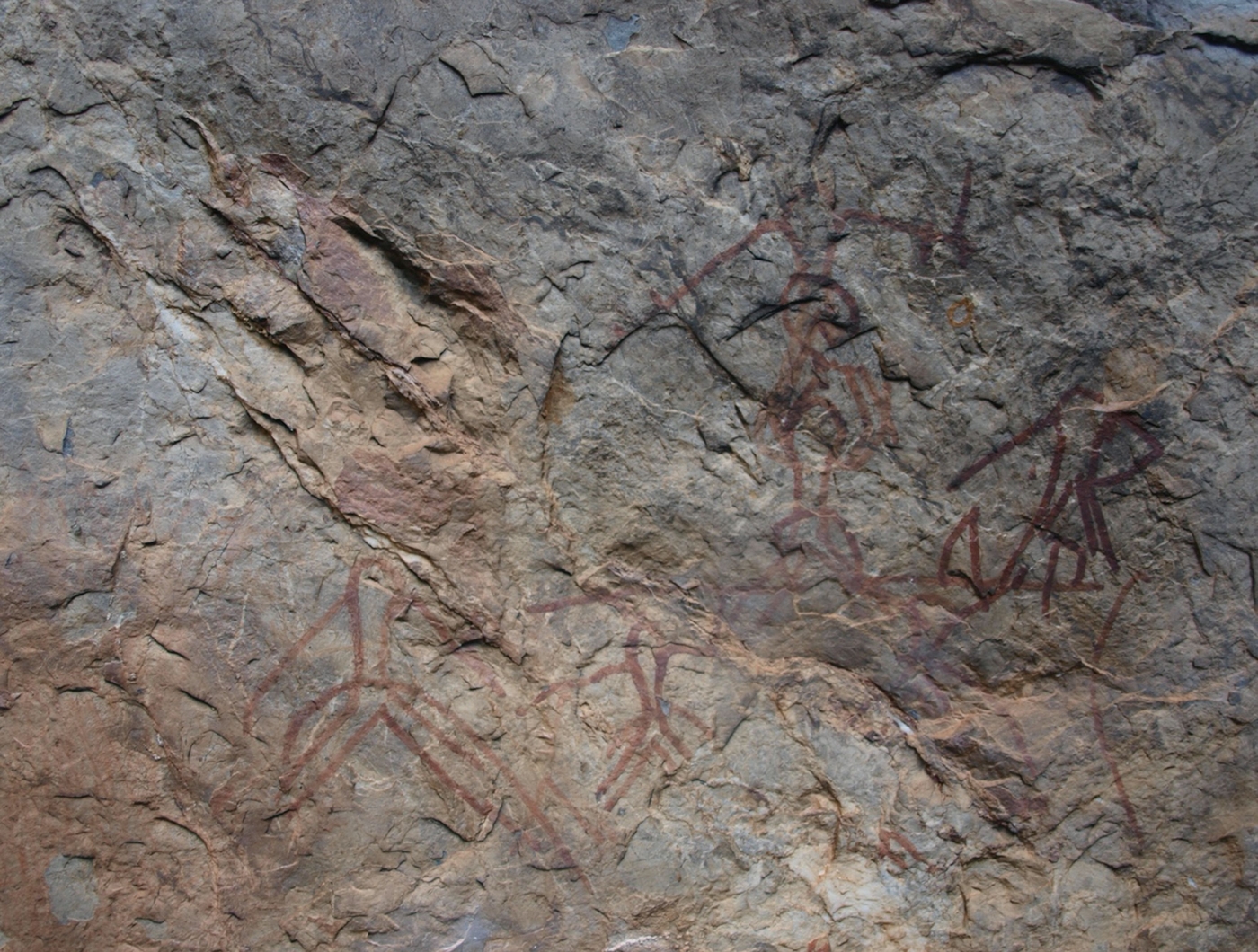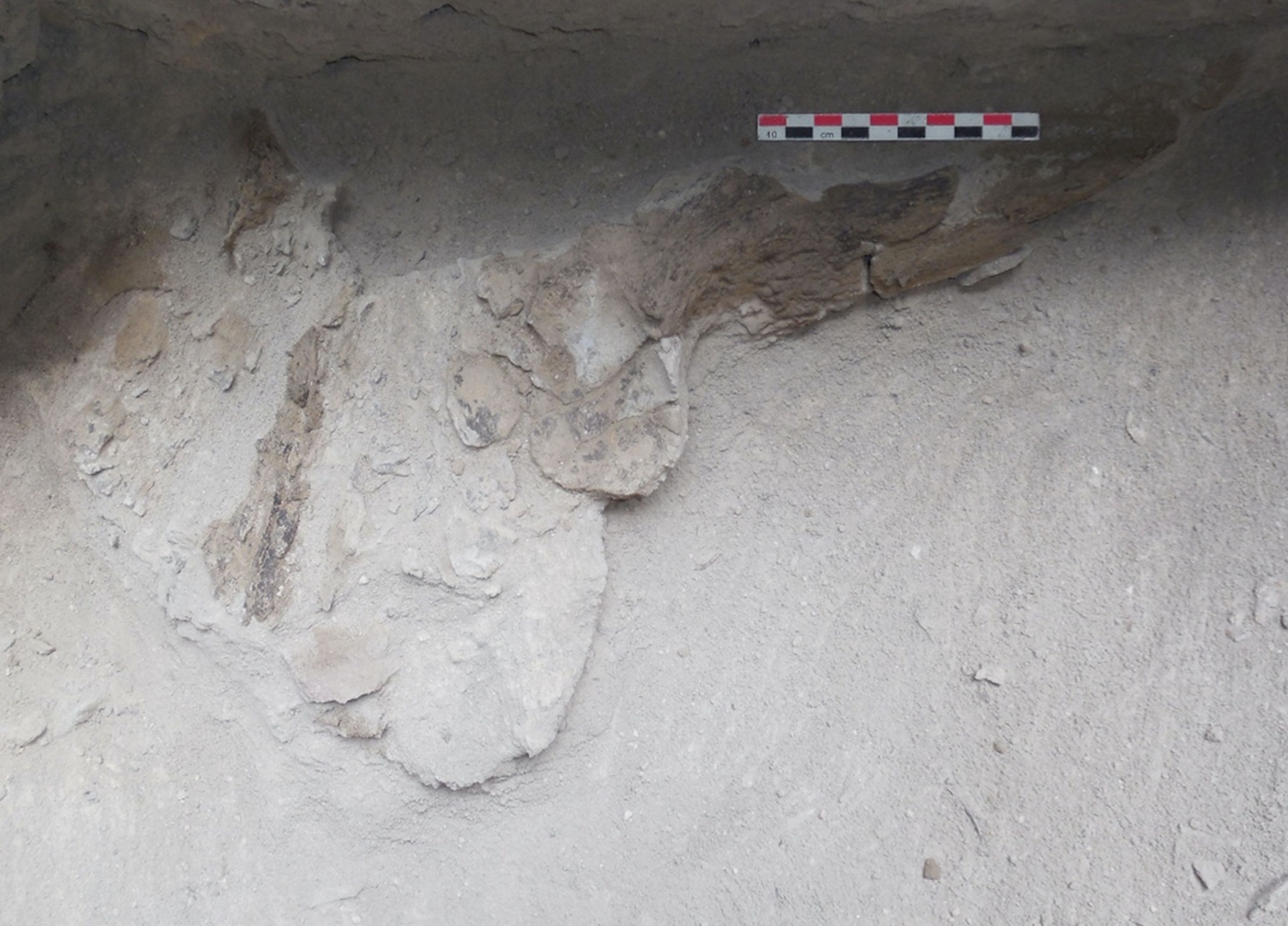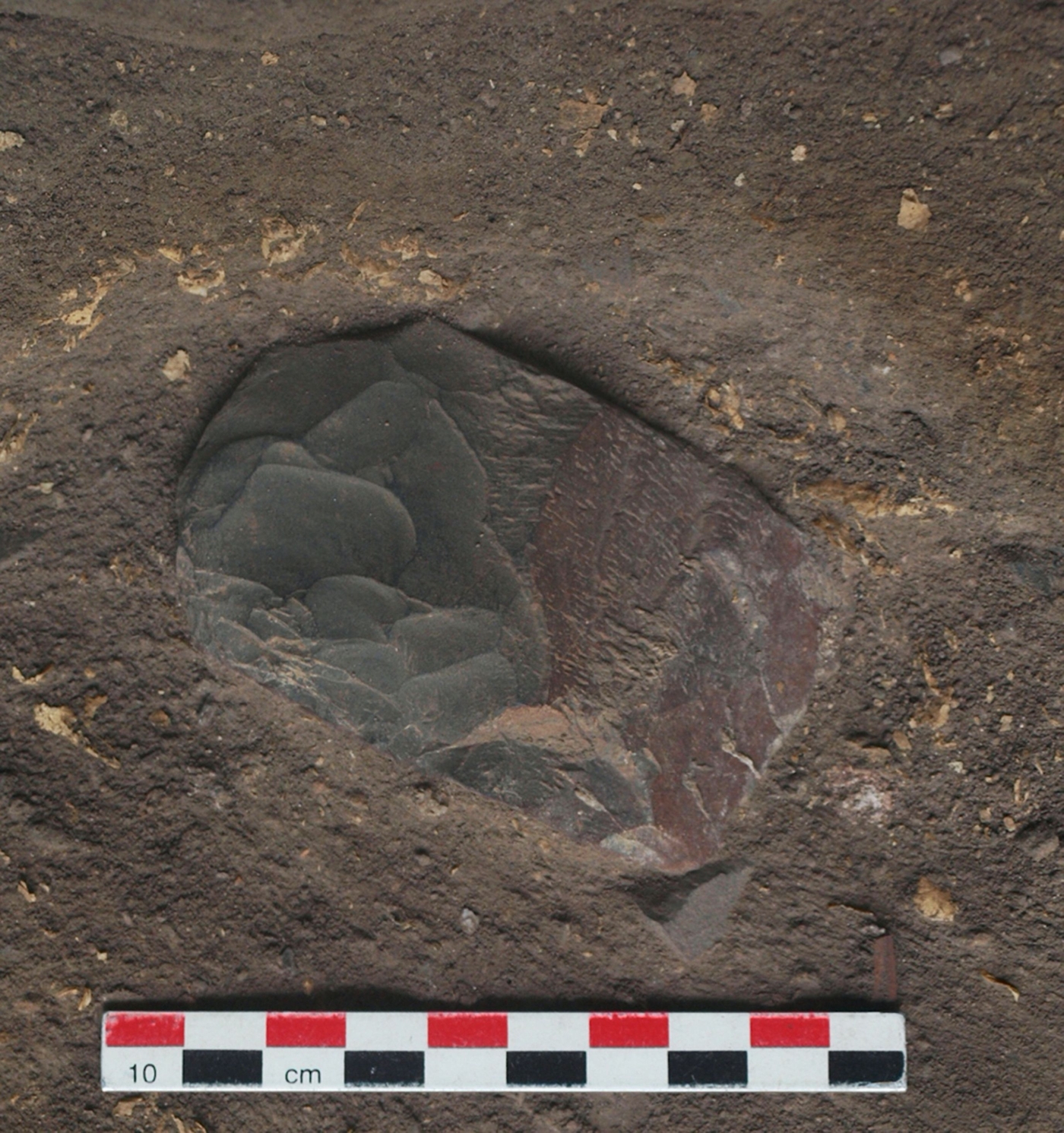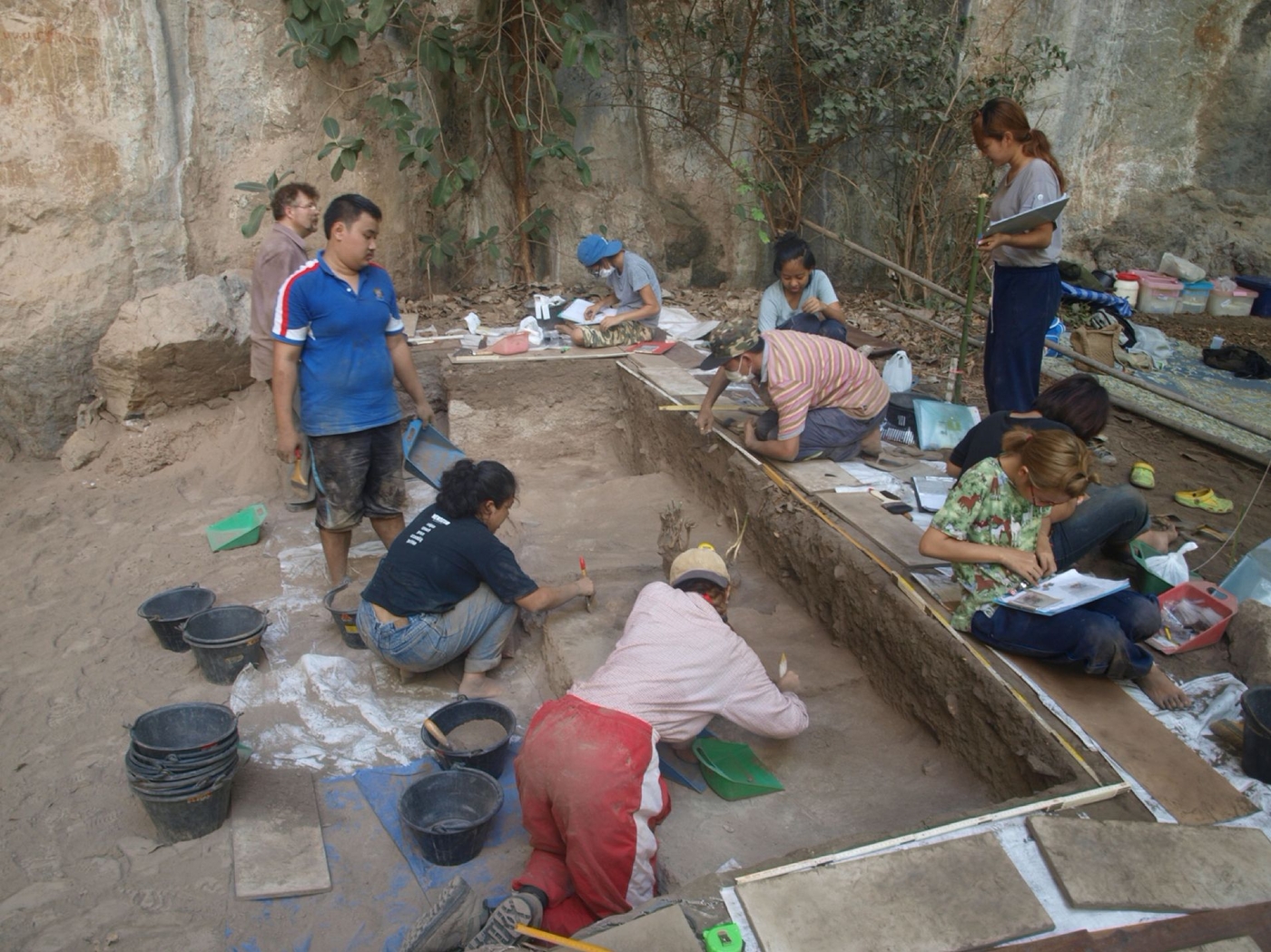Doi Pha Kan rock shelter
In Lampang province, the Doi Pha Kan rock shelter, with Ban Tha Si and Phratu Pha, is one of very few decorated sites in northern Thailand. Combining burials and paintings, it sheds light on the development of mortuary practices during a poorly documented period of South-East Asian history.

Discovered in 2004 during surveys carried out by the Mission Paléolithique Franco-Thaïe, a multi-disciplinary team has been excavating the site since 2013. Archaeologists discovered several highly unusual burials dating directly to more than 13,000 years ago.
A valley decorated with rock paintings
Located a few kilometres between the Ban Tha Si site, dated to 7000 years ago, and the Pratu Pha site dated to 3000 years ago and containing the longest wall painting in northern Thailand, the Doi Pha Kan site attests to the emergence of funerary practices associated with paintings as early as 13,000 years ago.
A burial site
The burials at Doi Pha Kan point to the inconsistent treatment of individuals. However, each burial is marked by the use of large covering blocks, a bed of ochre powder and the presence of offerings such as shells, animal bone remains, pierced stones and stone tools.
A still unknown regional identity
The people buried in Doi Pha Kan were tall, in contrast to other people known to have lived in the region at this time. They are characterised by the production of a specific lithic assemblage that includes pierced stones. This bio-cultural ensemble is found in a geographic area that runs like a girdle around South East Asia, from the east of Burma and the south of China to northern Laos and Vietnam, and not identified until recently.
Adapting the tropical environment
The Prehistoric tools discovered by archaeologists reveal an original variant of the Hoabinhian model found across South East Asia; the fauna consumed by these populations left behind significant remains of crab, tortoise and monitor as well as medium-sized forest mammals.
Multi-disciplinary research
The first excavations carried out since 2013 as a field school for students from the University of Chiang Mai and the University of Silpakorn in Bangkok laid the groundwork for research into the origin of the ochre pigments used in the graves and for wall paintings, funerary practices and biological anthropology, the development of lithic technology, and the nature of the tropical fauna hunted by hunter-gatherers.
The project is supported by the French Ministry for Europe and Foreign Affairs on the advice of the Excavation Committee (Commission des fouilles).
Useful links
- Website of the Centre de recherche en paléontologie-Paris (CR2P)
- Presentation of the International Research Network Paleobiodiverity in South-east Asia








